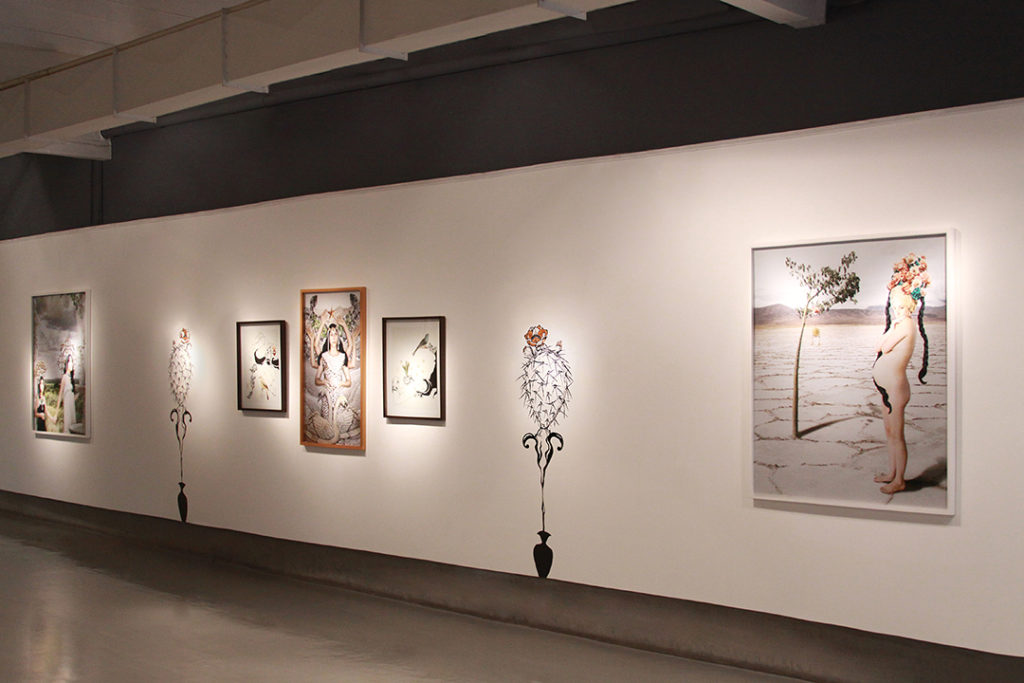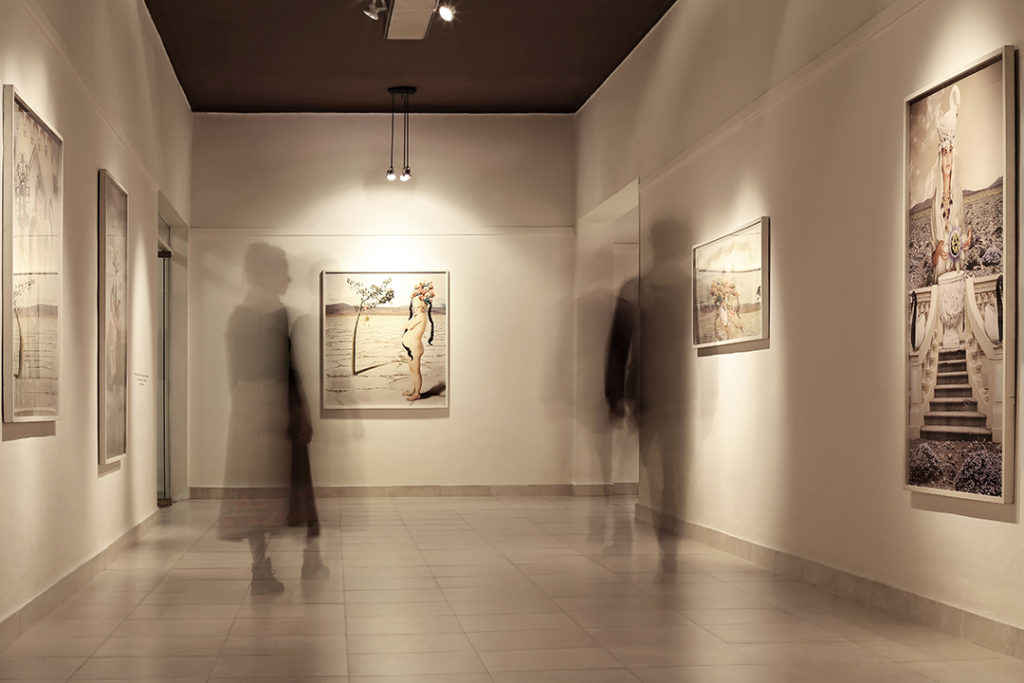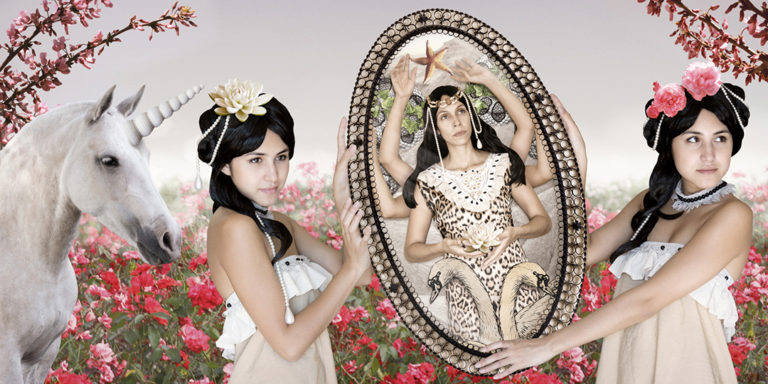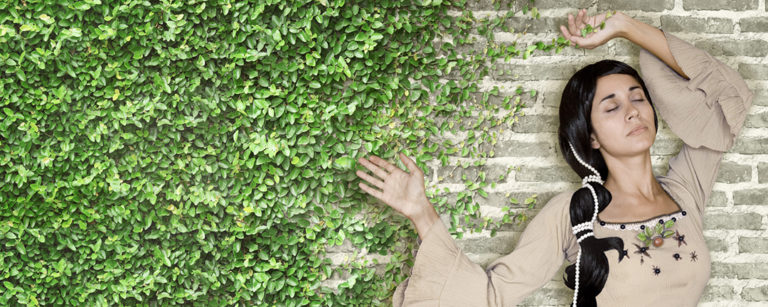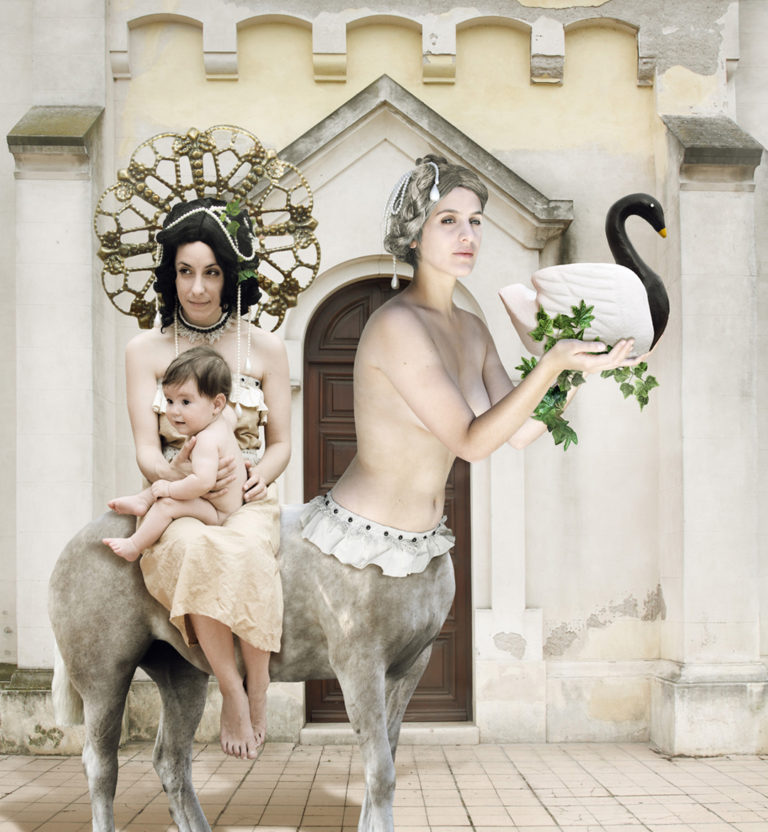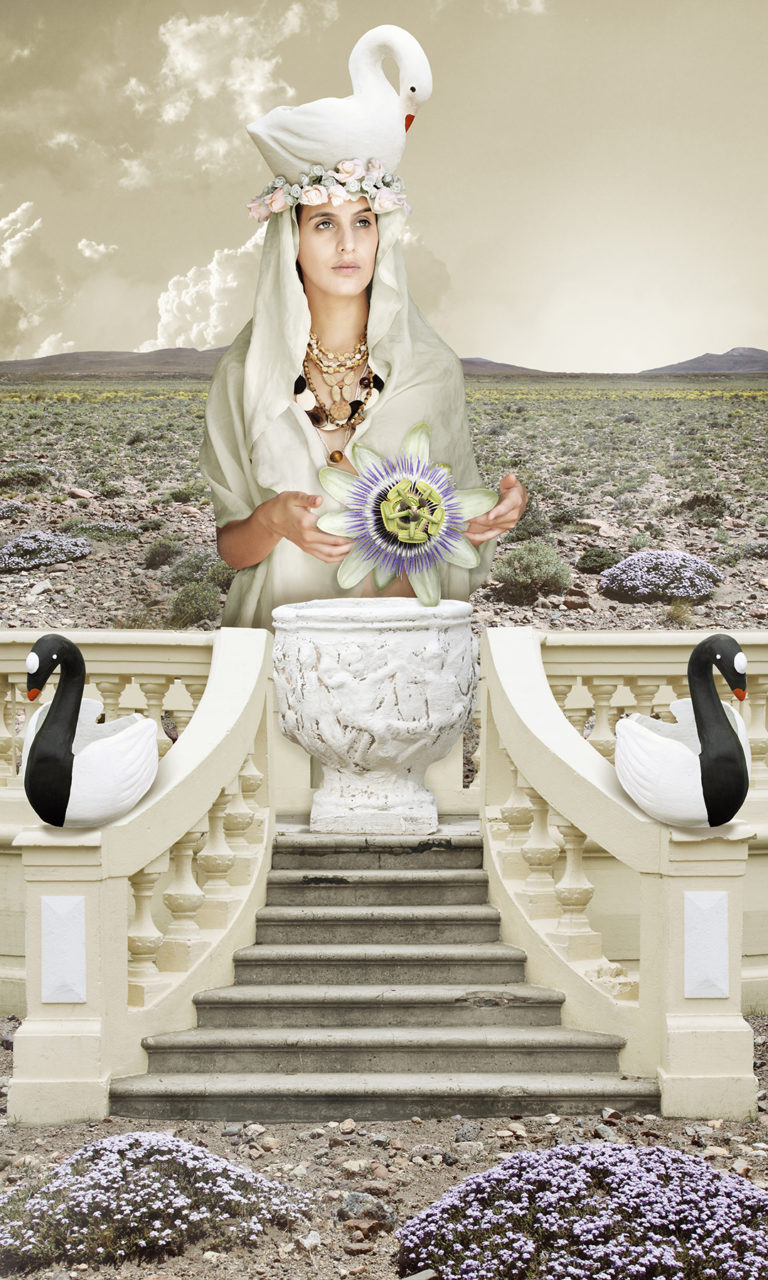THE ARRIVAL OF THE WILD WOMEN
(2010-2011)
Julieta Anaut stages rituals of symbolic return to primal Nature. Not plain nature, the one that animals perceive, but that lost treasure only humans know about, since they started cultivating their own fruit. That’s the origin of the word culture, and also the divine punishment that displaced Eden out of Earth.
That mythical territory is inhabited by Julieta Anaut in her photoperformances, first by putting her own body in the scene and, in this series, with the concentrated collaboration of a group of young women. The transition from the first works –those in which the artist defines herself, like Alejandra Pizarnik in her aching verses, I am the offering– and The arrival of the wild women is testimony of the sense of salvation that is present in every sacrifice.
They will guide us –Anaut promises– in this journey that doesn’t only join together past and present but also culture and nature. The wild women go through that border that doesn’t have a place except in sensory intuition. The artist doesn’t hide any of the artifices in her images: the scale jumps, the union of incongruent elements, everything tells us about a territory that is beyond the laws of coherence that rule our world and its representations.
In effect, what’s at play here isn’t virgin nature –if any of it persists in this world–but the myriad of signs that, from the most diverse cultures, give testimony of its loss. Greco-Roman deities, Christian imagery, Andean-baroque mixed virgins, romantic heroines from the 19th century, Flemish still lifes, the horizon that summarizes the sublime landscape… all these lives together without inhibitions in Julieta Anaut’s photographs. But this reenacted nature, as the artist states, has joy as its goal. Far from the failure of language –so dear to postmodern art theorists– the freedom in these images transmits a rare faith, an optimism.
In that sense, we can affirm that Anaut’s work reenacts also, in the spirit of a contemporary language, the tradition of ritual performance that, in the 60s and 70s, had in Latin America examples as important as artists Ana Mendieta and Lygia Clark, while it had small impact in Argentina. Another way, in the end, to tie times and borders back together, this time in the field of art history.
Valeria González, Buenos, Aires, 2011.
Curatorial text of the series for the solo exhibition “The arrival of the wild women” at ArtexArte Fundación Alfonso y Luz Castillo, Buenos Aires, 2011. Published in the catalogue Latent Fauna, 2012.
